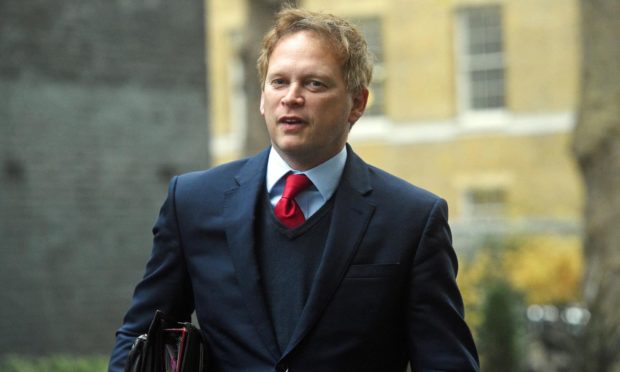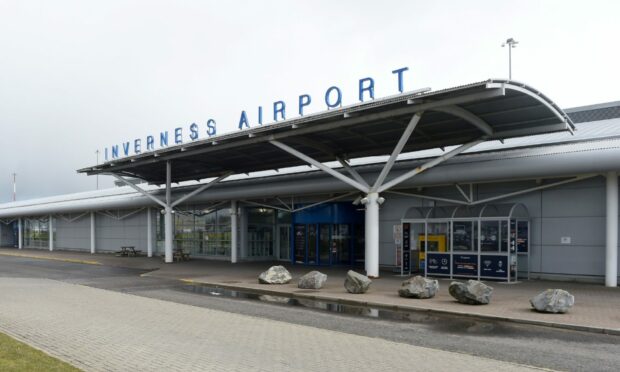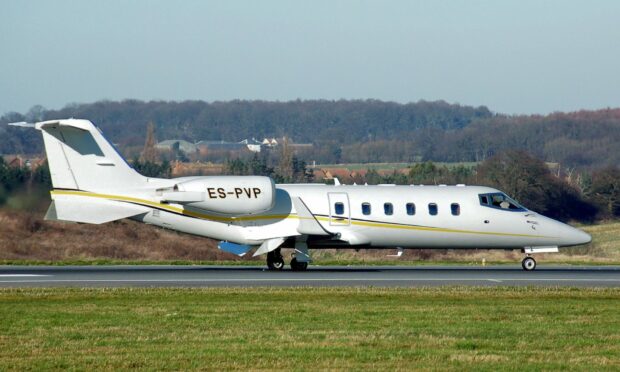Senior Conservative Grant Shapps is refusing to back down and accept any blame for a controversial decision to allow a flight from Inverness Airport to Russia despite a ban.
The UK transport secretary wrote a letter claiming the decision to allow the private jet to depart the Highland capital for Moscow could only have been made by the airport.
However, we previously revealed that staff in Inverness contacted the UK Government’s Border Force, the police’s Special Branch and air traffic controllers NATS before the flight was allowed to take off.
Mr Shapps had previously come under pressure to apologise after he claimed on social media that Inverness “failed to comply” with the ban, which was brought in because of President Putin’s invasion of Ukraine.
In the latest development, Mr Shapps has doubled down on his insistence that the airport was to blame.
What happened with the mystery flight?
The private charter was allowed to depart the Highland capital on February 26.
It was in apparent breach of restrictions introduced the day before through an official Notice to Air Missions (NOTAM).
In a letter written to SNP MP Peter Grant, Mr Shapps claimed: “I understand that Inverness Airport sought assurances from the NATS Prestwick, which operates independently of government.
“NATS are responsible for ensuring flights have a compliant flight plan but are not
responsible for holding passenger information.
“No clearance to operate the flight was required by NATS, and it remained Inverness Airport and their own air traffic control service’s decision to clear the departure.”
A spokesman for Inverness Airport’s owners, Highlands and Islands Airports Ltd (HIAL), rejected the minister’s claim.
‘Our actions were correct and appropriate’
“HIAL adhered to all relevant instructions at all times,” the spokesman said.
“We carried out the instructions received from the authorities at the time to the letter.
“Our actions were correct and appropriate and this has been borne out by an examination of the documented procedures.”
We previously revealed extracts from a transcript of the conversation between NATS controllers and Inverness Airport crews on the day of the flight.
They said they would “expect contact” from Mr Shapps’ Department for Transport if there was “anything specific” to be done in terms of blocking about the departure.
The UK Government has also refused our request to release Mr Shapps communications relating to the flight.
The department said: “To release this information could have detriment to the UK’s world standing and ongoing diplomatic relations relating to the wider Russian invasion of Ukraine.
“The detriment would be caused by countries not trusting the UK with their information and in some cases be in breach of international conventions of sharing information between countries.”
An SNP spokesman said: “It’s clear the UK Government still has questions to answer over this flight.
“We know from a leaked memo it was them who approved it and yet here they are trying to pass the buck off to someone else.”
Who was on the flight?
A family of three was believed to have been on board the Estonian-registered Panaviatic jet when it left Inverness bound for Moscow’s Vnukovo airport.
The plane departed the Highland capital just two days after Russia invaded Ukraine and only 12 hours after a ban on Russian flights came into force.
The jet travelled from Moscow to Geneva and then on to Amsterdam on February 25.
It flew to Inverness, Moscow and back to Geneva on the following day.
We previously reported that Panaviatic, the charter company, was linked to a bank at the centre of an Estonian money laundering probe.



